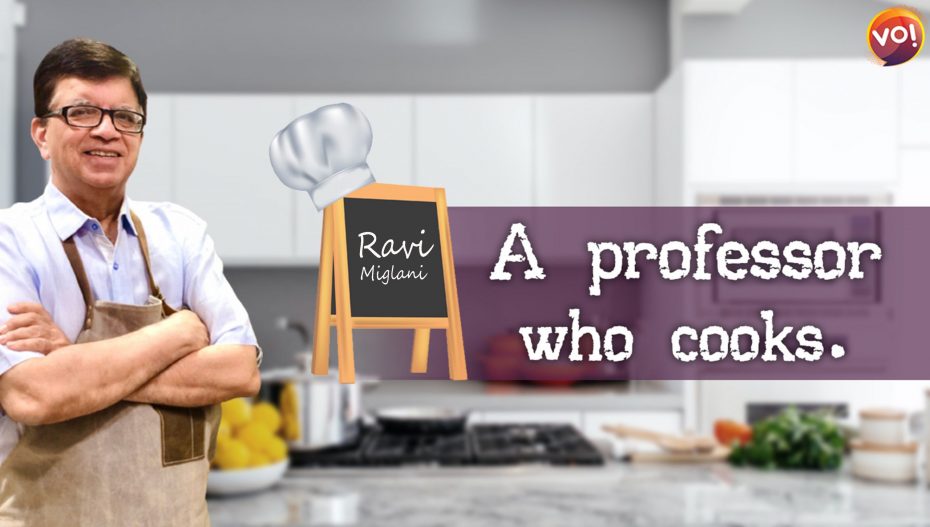In this column, I have often talked about how food travels and transforms. How cultures clash and then meld, and new cuisines emerge through the assimilation of the ingredients and cooking techniques of different cultures.
The best cuisines of the world are those that have arisen out of this merging and blending. This fact was brought in sharp focus to me when I recently started digging into one dish – ratatouille. The trigger was the vast array of winter vegetables that are available in the city these days, a far cry from the boring variations of gourds in the summer – my gourd!
I was looking for a dish which could best use the colourful fresh vegetables. Ratatouille fitted the bill. This one dish, born centuries ago as a poor peasant’s one-pot stew in the Provence region of France has evolved beyond recognition, thanks in no small part to the eponymous movie Ratatouille – the highly acclaimed Oscar-winning animated classic of 2007 from Disney Pixar. For those who have not watched Ratatouille, please first go watch it. You should not be reading a food column without having watched the best food-themed movie ever made. But, in case you haven’t, this is a story of a rat named Remy, who dreams of being a chef – don’t judge, anyone can dream, just as anyone can cook. Remy adores Chef Auguste Gusteau, and follows his passion, to the movie’s finale (spoiler alert) when he creates his signature ratatouille. Except this was not ratatouille – the peasants of Provence would have been horrified at the fancy Michelin-worthy nouvelle cuisine dish that was passed off as ratatouille in the film. And given that Ratatouille was such an epic film, the world now thinks that what Remy-the-rat cooked is the real ratatouille.
As I say, there is no such thing as an authentic recipe – you do you. So if the director of Ratatouille calls the concoction in his movie a ratatouille, so be it. But, just to set the record straight, it is not.
Ratatouille comes from a long tradition of ordinary people all over the world throwing the produce of the day into one pot, and creating their own version of a stew – from the legendary soul food Gumbo in Louisiana in the southern United States, to the Korean Jjigae, to the Kerala Ishtu, to the Stroganoff of Russia, to the Rogan Josh of Kashmir, to the Hungarian Goulash, to the Berber Tagine of Morocco…I could go on. No fancy chefiness, no dramatic Masterchefy plating, just simple honest home food.
Obviously, such simple non-instagram-worthy food would not fit the aesthetics of an Oscar-worthy Pixar movie. So the directors of Ratatouille engaged the celebrity chef Thomas Keller – he of the several Michelin starred restaurant The French Laundry in California’s hip Napa Valley – as the food consultant to the movie. Keller went where all fancy people go for fancy-pants food ideas – to France. The fine-dining version of ratatouille – with thinly sliced vegetables aesthetically arranged in circles on top of a tomato garlic sauce – is actually called Confit Byaldi – developed by Michel Guérard, the godfather of French nouvelle cuisine. Now you know who to blame for the huge pretentious spotless plates at French eateries, with a tiny flowery circle of food in the middle, and swooshes of sauces around it, embellished with microgreens. That’s nouvelle cuisine – more drama less food.
Anyway, this pretentious version of ratatouille made it via Guérard and Keller into the movie Ratatouille, and now, every time I google ratatouille, I see the ornate slices-in-a-circle Ratatouille avatar of ratatouille. I want the lower-case r honest-peasant-one-pot-stew ratatouille, not the upper-case R movie-version Ratatouille.
The ingredients in both versions are the same – aubergine, peppers, courgette, onion, garlic, tomato. In my down-to-earth version, I go the whole nine yards: I char the red and yellow peppers to de-skin them; I blanch the tomatoes and peel them; I salt the aubergine to dehydrate them. Then I chop the vegetables into bite-size pieces (not roundels), fry each vegetable separately. Then make an onion-garlic-tomato sauce, laced with red wine vinegar. Then – in a sharp left turn off-script – I throw in some chickpeas and Tunisian harissa – who says ratatouille cannot cross the Mediterranean to North Africa if it can cross the Atlantic to become the fake Hollywood version.
The result was a hearty homey honest humble wholesome stew. Julia Child would have been proud – I am in her camp; rustic chunky food, throw everything and the kitchen sink into a pot; no nouvelle cuisine for me.
Having said that, you do you – whatever floats your boat. I claim no authenticity for my version. Remember, there is no such thing as one authentic version of any dish. If the pretentious roundels of vegetables daintily adorned over a hint of a sauce and some foam and microgreens is your thing, then unfortunately that is your thing. Blame your ratatouille on Ratatouille. Or come to me for the real thing.
This Professor Cooks. And talks about food ideas, food science, food culture, food hacks, and food history. Watch this space for some food and a lot more food for thought.
Ravi Miglani is a home cook and consumer insights professional. Following a corporate career spanning eight countries and three decades, he is now a professor at Ahmedabad University (when he is not cooking).












